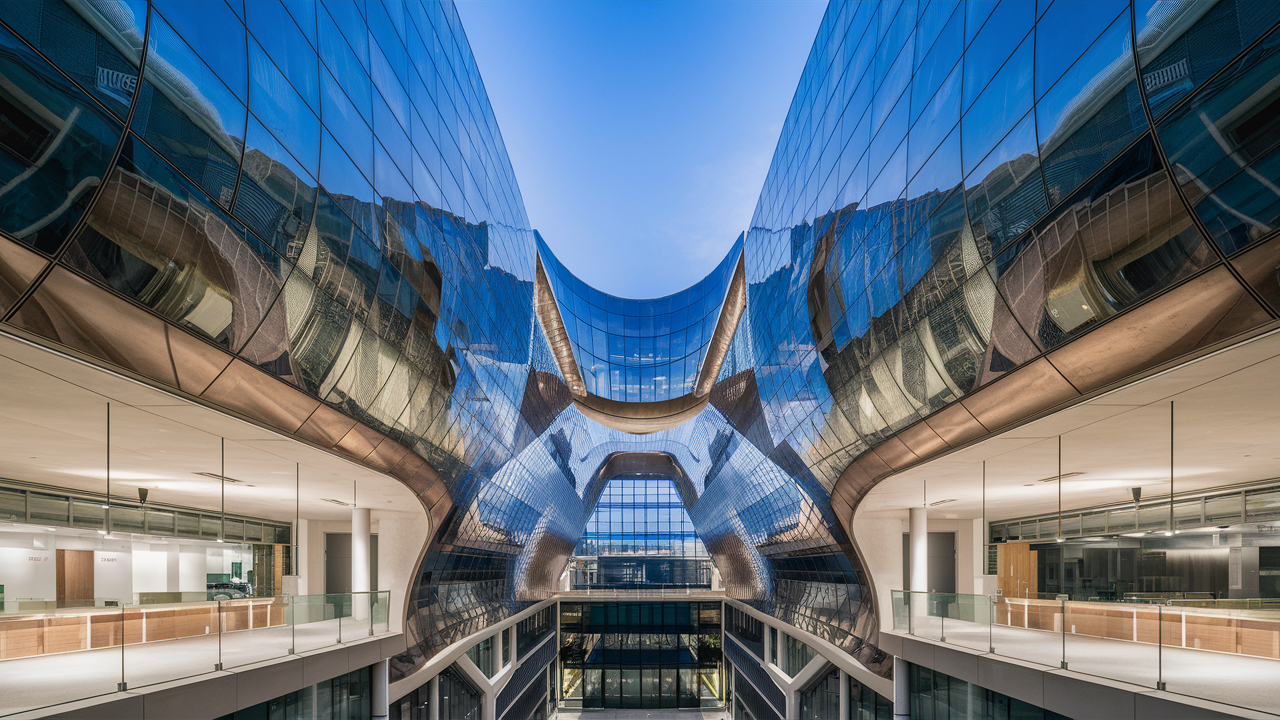Introduction to Shearling Vests:
Shearling vests have made a prominent mark in the world of fashion, and their popularity continues to rise. These stylish and cozy garments are a versatile addition to any wardrobe, offering both warmth and a touch of luxury. Whether you’re a fashion enthusiast or simply looking for a practical and chic outerwear option, shearling vests are worth considering.
In recent years, Shearling Vests have transitioned from being primarily functional winter wear to fashion-forward statements that can elevate your entire outfit. They are beloved for their soft, plush texture and their ability to provide warmth without the bulk of a full coat. Shearling vests effortlessly blend into various style aesthetics, whether you prefer a casual, bohemian look or a more polished, urban appearance.
With their timeless appeal and adaptability, shearling vests are often sought after by fashion-conscious individuals seeking to make a bold yet cozy fashion statement. Now, let’s delve deeper into what makes shearling unique.
Understanding Shearling Material:
Shearling is a distinctive type of fur or wool that comes from the hides of sheep or lambs. Unlike other types of fur or faux fur, shearling retains both the suede side (the leather) and the wooly side (the fur). This dual-sided composition sets shearling apart and contributes to its luxurious appeal.
Here’s how shearling differs from other materials like faux fur:
Authenticity: Shearling is a natural material derived from animal hides, whereas faux fur is synthetic and manufactured from various textiles like polyester or acrylic.
Texture: Shearling offers a uniquely soft and supple texture due to the natural fur, while faux fur may have a less authentic feel and appearance.
Insulation: Shearling is highly regarded for its insulation properties, providing exceptional warmth in cold weather. Faux fur, while warm, may not offer the same level of insulation.
Breathability: Shearling is breathable and moisture-wicking, making it comfortable to wear in a variety of conditions. Faux fur may trap heat and moisture more easily.
Durability: Authentic shearling tends to be more durable and long-lasting compared to faux fur, which may wear down and lose its appearance over time.
Understanding the distinctions between shearling and other materials is crucial when it comes to caring for your shearling vest and making an informed decision about your outerwear choices.
Shearling Vest Types:
Shearling vests come in various types, primarily categorized into natural shearling and synthetic shearling:
Natural Shearling Vests: These vests are made from genuine sheep or lamb shearling, which is prized for its warmth, softness, and natural beauty. Natural shearling vests often have a luxurious look and feel and are favored by those who appreciate the authenticity of natural materials.
Synthetic Shearling Vests: Synthetic shearling vests are crafted from man-made materials designed to mimic the appearance and texture of natural shearling. They are often more affordable and may appeal to those who prefer cruelty-free fashion options.
The choice between natural and synthetic shearling vests depends on personal preferences, budget, and ethical considerations. Natural shearling offers the ultimate luxury and performance, while synthetic options provide affordability and animal-friendly alternatives.
Preventative Care:
Preserving the beauty and longevity of your shearling vest begins with preventative care measures. Here are some valuable tips to keep your vest looking its best:
Protective Spray: Invest in a quality shearling protector spray designed to repel moisture and stains. Apply the spray before wearing your vest, especially in wet or snowy conditions. This creates a barrier that helps prevent liquids and dirt from penetrating the shearling.
Storage: When not in use, store your shearling vest in a cool, dry place. Avoid exposing it to direct sunlight or heat sources, as excessive heat can cause the shearling to dry out and lose its softness.
Avoid Overloading: Shearling vests are plush and voluminous, so be mindful not to crush or squeeze them when storing or hanging. Use a padded hanger or lay the vest flat to maintain its shape.
Rotate Wear: If you have multiple shearling vests, rotate them regularly to prevent excessive wear on a single garment.
Handle with Care: When wearing your shearling vest, be cautious around sharp objects, rough surfaces, and abrasive materials to prevent tears or damage to the fur.
By following these preventative care tips, you can ensure that your shearling vest remains in pristine condition and continues to be a fashionable and functional addition to your wardrobe for years to come.
Regular Cleaning:
Regular cleaning is essential to maintain the appearance and durability of your shearling vest. Over time, dust, dirt, and oils from your skin can accumulate on the surface, potentially matting the fur and diminishing its natural luster. Here’s a step-by-step guide on how to clean your shearling vest:
Materials Needed:
Soft-bristle brush or cloth
Mild detergent (preferably shearling-specific)
Lukewarm water
Two clean, soft cloths or sponges
Towels
Prepare a Cleaning Solution:
Fill a basin or sink with lukewarm water.
Add a small amount of mild detergent specifically designed for shearling or delicate fabrics. Avoid harsh chemicals or detergents.
Cleaning the Vest:
Lay the shearling vest flat on a clean, dry surface.
Dip a soft cloth or sponge into the soapy water mixture, ensuring it’s not overly wet.
Gently dab or wipe the soiled areas of the vest in a circular motion. Avoid vigorous rubbing, which can damage the fur or leather.
For stubborn stains or heavily soiled areas, use a soft-bristle brush to lightly scrub while being gentle.
Rinsing:
Fill another basin or sink with clean, lukewarm water.
Rinse the vest by wiping it down with a clean, damp cloth or sponge to remove any soap residue.
Drying:
Gently pat the vest with towels to remove excess moisture. Avoid wringing or twisting, as this can damage the shearling.
Lay the vest flat on a clean, dry towel in a cool, well-ventilated area.
Allow it to air dry naturally, ensuring it’s not exposed to direct sunlight or heat sources.
Fluff and Restore: After the vest is completely dry, fluff the shearling with your fingers to restore its softness and volume.
Spot Cleaning:
Addressing specific stains or spots on your shearling vest women’s requires a more targeted approach:
Blot the Stain: As soon as you notice a stain or spill, blot it gently with a clean, dry cloth or paper towel to absorb as much of the liquid as possible. Do not rub, as it can push the stain deeper into the shearling.
Prepare a Mild Cleaning Solution:
Mix a small amount of mild detergent with lukewarm water.
Test the solution on an inconspicuous area of the vest to ensure it doesn’t discolor or damage the shearling.
Spot Clean:
Dip a clean, soft cloth or sponge into the diluted detergent mixture.
Gently blot and wipe the stained area in a circular motion until the stain is removed.
Rinse the area with clean water to remove any detergent residue.
Dry and Restore:
Follow the same drying and restoration steps mentioned in the regular cleaning section.
Drying and Air Circulation:
Proper drying is crucial to prevent damage to your shearling vest:
Avoid Heat Sources: Never use direct heat sources like radiators, heaters, or hairdryers to dry your shearling vest, as excessive heat can dry out and damage the fur and leather.
Air Circulation: Lay the vest flat on a clean, dry towel in a cool, well-ventilated area. Ensure there is adequate air circulation around the vest to facilitate drying.
Patience: Allow the vest to air dry naturally, which may take some time depending on the ambient humidity. Be patient and avoid rushing the drying process.
Fluff and Restore: After the vest is completely dry, gently fluff the shearling with your fingers to restore its softness and volume.
Storage Tips:
Proper storage is essential for preserving your shearling vest during the off-season:
Clean Before Storage: Ensure the vest is clean and free of stains before storing it.
Use a Breathable Garment Bag: Place the shearling vest in a breathable garment bag made of natural fabrics like cotton. Avoid plastic bags, as they can trap moisture and damage the fur.
Provide Ventilation: Store the garment bag in a cool, dry place with good ventilation. Avoid areas prone to humidity or extreme temperature fluctuations, such as basements or attics.
Avoid Compression: Do not hang the shearling vest on a wire hanger, as it may misshape the shearling. Instead, lay it flat or use a padded hanger if necessary.
By following these cleaning and storage guidelines, you can ensure that your shearling vest remains in excellent condition and continues to be a cherished addition to your wardrobe season after season.
Professional Cleaning:
There are certain situations when seeking professional cleaning services for your shearling vest becomes necessary:
Deep Stains: If your shearling vest has deep or stubborn stains that you cannot remove through regular or spot cleaning, it’s time to consult a professional cleaner. They have the expertise and specialized equipment to tackle challenging stains without damaging the material.
Extensive Soiling: If your shearling vest is heavily soiled or has absorbed odors over time, professional cleaning can help restore its freshness and appearance.
Tips on Finding a Reputable Cleaner:
When choosing a professional cleaner for your shearling vest, consider the following tips:
Experience with Shearling: Look for cleaners with experience in handling shearling or delicate materials. They should understand the specific requirements of cleaning and caring for shearling.
Recommendations: Seek recommendations from friends or online reviews to find cleaners known for their quality and reliability.
Ask Questions: Don’t hesitate to ask the cleaner about their cleaning process, the products they use, and whether they have experience with shearling. Reputable cleaners will be transparent about their methods.
Check for Certification: Some cleaners may have certifications or affiliations with industry organizations that demonstrate their expertise and commitment to quality.
Repair and Maintenance:
Addressing minor damage or wear and tear is essential to prolong the life of your shearling vest:
Loose Seams: If you notice loose seams or stitching, it’s best to have them repaired promptly. Loose seams can lead to further damage if left unattended.
Missing Buttons: If your shearling vest has buttons, replace any missing ones to ensure the vest remains functional and stylish.
Consult a Skilled Professional: For any repairs, consult a skilled tailor or cobbler who has experience working with shearling. They can assess the damage and provide the necessary repairs, ensuring that your vest maintains its quality and appearance.
Seasonal Care:
Preparing your shearling vest for storage during the warmer months is crucial to keep it in excellent condition:
Clean Before Storage: Ensure the vest is thoroughly cleaned before storing it to prevent any stains or odors from setting in during storage.
Use a Breathable Garment Bag: As mentioned earlier, use a breathable garment bag to protect your shearling vest from dust and moisture.
Avoid Direct Sunlight: Store the garment bag in a cool, dark place away from direct sunlight, which can cause fading or damage to the shearling.
Periodic Inspection: Check on your shearling vest periodically during the off-season to ensure it remains in good condition. Address any issues promptly to prevent further damage.
Ethical and Sustainable Care:
Caring for your shearling vest in an eco-friendly and sustainable manner is essential in today’s fashion-conscious world:
Responsible Care: Be mindful of the impact of your fashion choices on the environment. By investing in high-quality shearling and taking good care of it, you can reduce the need for frequent replacements.
Consider Ethical Sourcing: When purchasing a shearling vest, research brands and retailers that prioritize ethical sourcing of materials and sustainable manufacturing practices.
Repair and Reuse: Rather than discarding a shearling vest with minor damage or signs of wear, opt for repairs to extend its lifespan. Reusing and repairing garments reduces waste and supports a more sustainable fashion industry.
Conclusion and Recap:
Proper care and maintenance of your shearling vest are essential for its longevity and continued appeal. To recap:
Regular cleaning, spot cleaning, and proper drying techniques are crucial to maintain the vest’s appearance.
Seek professional cleaning services for deep stains or extensive soiling, and choose experienced cleaners.
Address minor damage through skilled tailoring or cobbling.
Prepare the vest for seasonal storage and store it in a cool, dark place with proper ventilation.
Consider ethical and sustainable practices when caring for your shearling vest to minimize the fashion industry’s environmental impact.
In conclusion, by following these guidelines and taking a responsible approach to shearling care, you can enjoy the timeless beauty and warmth of your shearling vest for years while minimizing its impact on the planet. Proper care is not only practical but also environmentally responsible.




